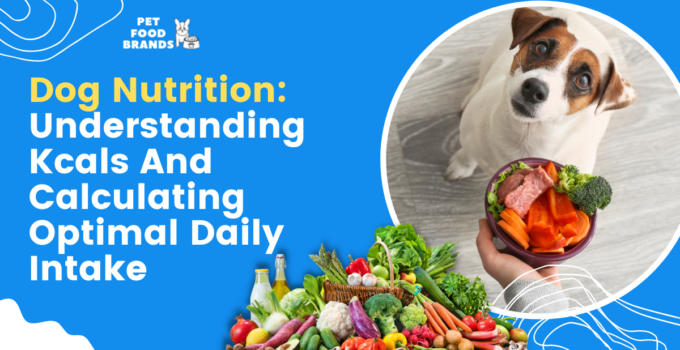It’s time to face the truth. Every pet parent has worried about how much food is the right amount for their dog’s overall health. And with terms like calories or kcals, things can become even more complicated.
Are you wondering what kcals is, or how do you calculate your pup’s adequate daily food intake? Well, kcal stands for kilocalorie, and a kcal amounts to 1000 calories.
If you’re getting confused regarding the amount and finding it hard to decide how much to feed your dog, here is a complete guide on kcal for you. Read on and learn to calculate the daily food intake of a healthy canine!
Decoding Kcals For You
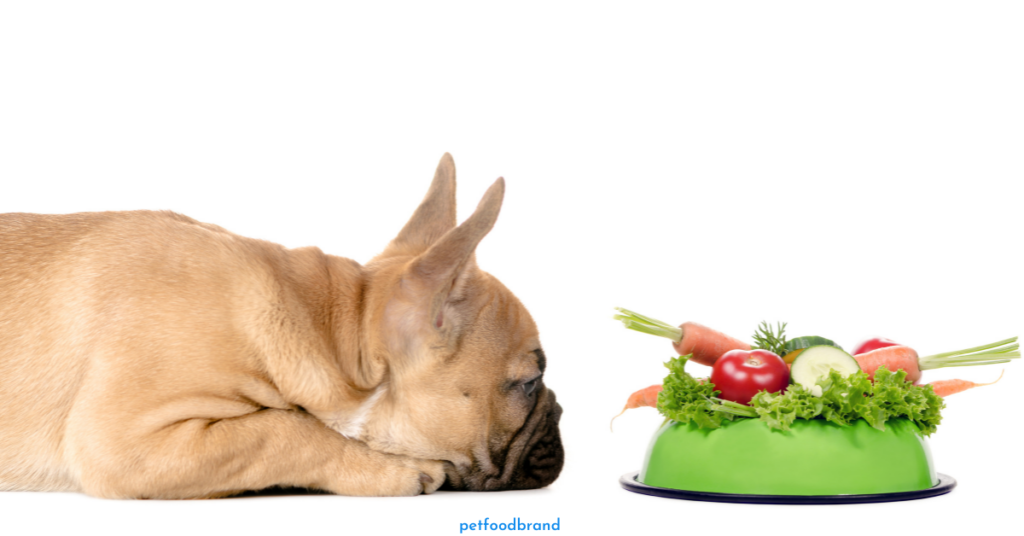
If you’re even remotely health conscious or surrounded by people who are, you must’ve certainly heard all about calories. But what exactly is it? It’s a unit used to measure energy.
The term calorie describes the energy present in any food. When we talk about the calories that you or your pets need, we usually mean the energy required by you and your pet friends.
Now you must be wondering what kcal is. Well, it is a kilocalorie, which equals 1000 calories. If you look at food labels or discuss dietary needs, the calorie term written on it might also refer to one kcal.
Pet food brands mostly use the term kcal, and knowing about it can be helpful while you shop for food and treats for your pup.
If the terminology is making your head spin, let me simplify it for you. The calorie word you generally hear or read about can be either a small “c” in lowercase or even a large “C” in uppercase.
1 large Calorie is the same as 1,000 small calories.
In scientific language,1 kilocalorie (kcal) equals 1 large Calorie as well as 1,000 small calories.
So, 1 kcal = 1 Cal = 1,000 cal.
Since many manufacturers feel that calories are a small measurement to discuss nutritional needs, they adopt kcal measurements instead and use them interchangeably with calories.
What is the Optimal Calorie Intake for Your Dog?
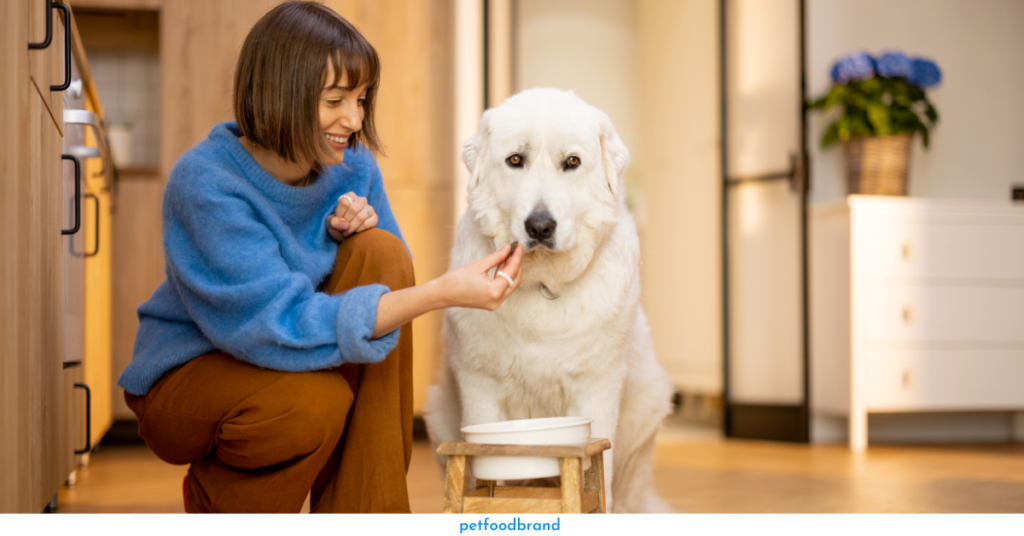
In order to stay healthy and energetic, your dog will need a required number of calories. Not only that, they need to consume a minimum amount of calories to maintain their body mass as well.
Let’s begin calculating the optimal caloric intake for your dog. You need to consider these three things to determine the optimal calorie intake for your furry friend:
1. Weight in Kg
Firstly, you need your pooch’s weight in kgs to determine their daily caloric needs. Simply divide your pup’s weight in lbs by 2.2 to convert it into kilograms.
Let’s say your dog weighs 22 pounds. The weight in kilograms will be 10 kg (22lbs / 2.2 = 10 kg). Similarly, a 60-pound pooch is 27 kg, and a 100-pound is 45 kg.
2. Resting Energy Requirement (RER)
The second thing you need here is RER or Resting Energy Requirement. It is the basic energy needed by a dog to sustain bodily functions that are essential, like digestion, metabolism, respiration, and circulation.
You can calculate RER by multiplying body weight in kgs by 70, raised to power 3/4.
It can be expressed as 70 x (weight in kg) ^0.75 = Resting Energy Requirement (kcal/day)
RER doesn’t take into account the additional energy your dog might need to grow, perform certain activities, or even for overall health maintenance. You must multiply it by some factors to estimate your dog’s MER or Maintenance Energy Requirement.
If you’re wondering what it means, keep reading to learn more about it.
3. Maintenance Energy Requirement (MER)
The third thing you need is MER. It is the estimated calories needed by a dog in an entire day.
You can calculate it simply by multiplying RER by “X,” which represents the additional energy needs of your dog.
RER x X= Maintenance Energy Requirement (kcal/day)
X here can refer to a wide range of factors, including your pup’s life stage, activity level, and any underlying health conditions or even environmental circumstances. All of these aspects can affect their energy needs.
Some common multipliers (X) you can use to determine the MER and caloric intake accurately are:
- Neutered Dog – 1.6
- Intact Dog – 1.8
- Weight Loss – 1
- Weight Gain – 1.7
- Heavy Work – 6
- Moderate Work – 3
- Light Work – 2
- Pup Under 4 Months Old – 3
- Dog Over 4 Months Old – 2
Let’s take an example to better understand it. A dog’s weight is 45 pounds, and the parent got it neutered. Here’s the calculation for optimal amount of daily calories:
- 45 pounds x 2.2 = 20.5 kg
- 70 x 20.5^(0.75) = 674 kcal in a day
- 674 x 1.6 = 1078 kcal daily
Factors That Can Influence Dogs’ Ideal Calories Intake
As every dog differs in terms of their appearance or even personality, their caloric needs can also vary. While you can use these formulas to calculate the optimum daily intake of calories for your dog, you must also take into account these crucial factors:
1. Age
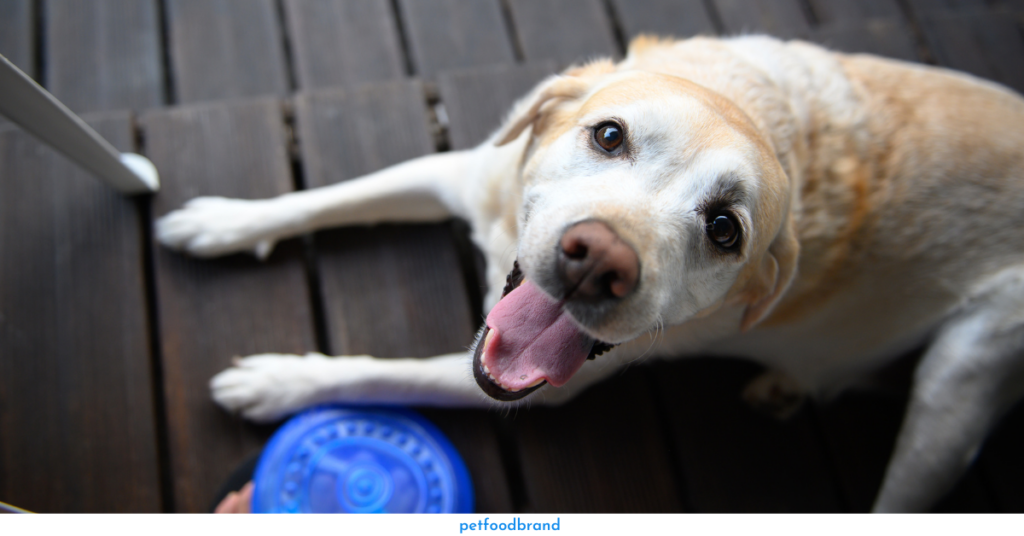
Puppies are infamous not only for being immensely cute but also for always being full of energy. And to stay energetic, they need more calories.
If you have a small pup, it’s vital to pay attention to what and how much you feed them. It will help ensure you don’t give the pup more shocks while it’s already adapting to new environments.
However, as dogs become older, they also become less active and need 20% less food than before. So does it mean you should feed them less? Not really; you just need to ensure that you give them food that has less fat and calories.
2. Weight
If your pooch has recently gained weight and you want to help them shed a few extra kilos, you might think that it’s best to feed them fewer calories. However, the ideal way to maintain their weight is by reducing portion sizes and increasing meals in a day to help boost the metabolism.
In case you want to help them gain some weight, you will give them more calories than what they will burn. The best strategy here will be supplementing meals and giving them extra treats.
3. Activity Level

Your dog’s activity and fitness level can also impact their daily calorie intake. Dogs that exercise regularly will need more calories since they will also burn more.
On the other hand, lesser active dogs, especially the ones in hot climates, should consume fewer calories to maintain weight.
4. Neuter Status
A neutered dog will need fewer calories, so it’s best to reduce calorie intake to maintain their weight. Now you have to take a call by observing whether your pup is overweight or underweight.
If it’s the former, then you can gradually reduce their caloric intake. However, if it’s the latter, you can slowly increase their food.
5. Pregnancy Status
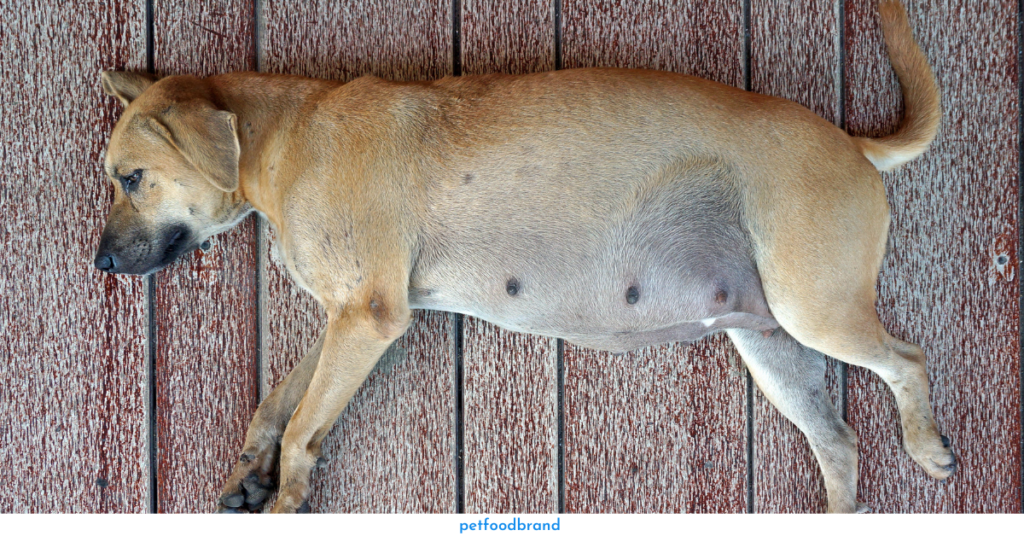
The optimum calorie intake of your dog will also change in case of pregnancy. During the initial two trimesters, you can feed them the same diet and amount of calories as you were providing.
But during the 3rd trimester, the canine will need around 30-60% more calories and energy.
Not only that, but the energy a lactating mother needs might also surprise you. The energy and calorie requirements of a female dog right after giving birth are more than those while they’re pregnant.
After 3-5 weeks of giving birth, they reach the highest level, when the dog may need 2-4 times more energy than a healthy adult canine. However, it will return to normal within 2-3 months.
So you need to keep monitoring your pet throughout their life cycle to cater to their optimal energy levels and curate their food accordingly.
Frequently Asked Questions
How To Know I’m Feeding My Pet Dog Enough?
If you feel you’re underfeeding your dog, you must check its waist to see if it is extremely exaggerated instead of a normal slope.
What Is An Ideal Feeding Schedule For Dogs?
You can give breakfast, an afternoon snack, and dinner to your dog, but some dog experts also suggest giving only two meals 12 hours apart.
How Many Calories Should A 50-Pound Adult Dog Consume Daily?
Ideally, a dog weighing 50 pounds should consume approximately 1300 calories.
Takeaway!
Knowing the calories, kcals, and optimum dietary intake of your pet is imperative. It helps you determine what’s the right diet for your dog and also the number of calories they need for overall health.
Carefully analyze the pup’s weight in kg, RER, and even MER to determine how many calories you must feed your dog in a day. Don’t forget to consider age, activity level, weight, and other factors when calculating the amount of calories.
Finding out the optimum calorie intake will eliminate all your worries about calories and diet and help keep your dog happy, healthy, and thriving!

Ankita is a passionate pet lover and head of content at Pet Food Brands. With her extensive knowledge and research, she provides pet owners with top-quality information on dog food and nutrition. Her dedication to improving the lives of dogs makes her a leading voice in the industry.

